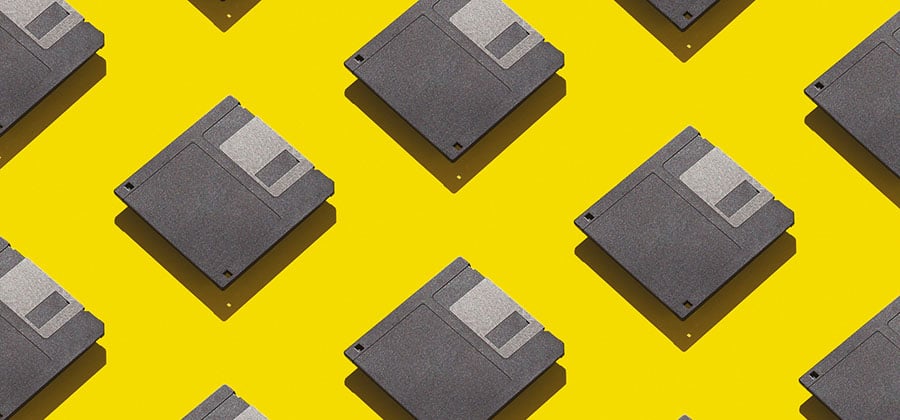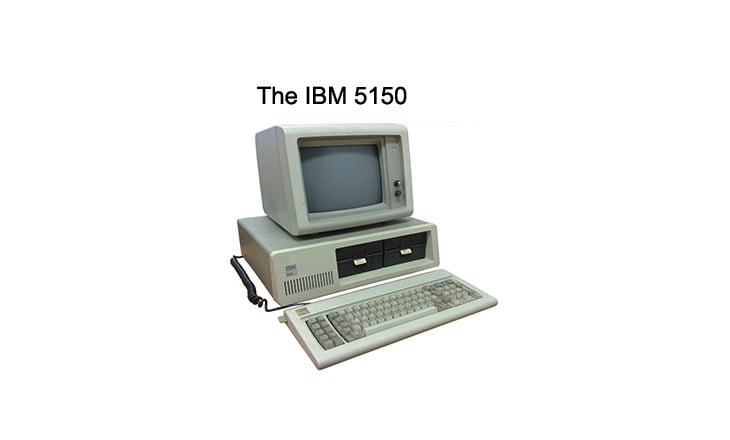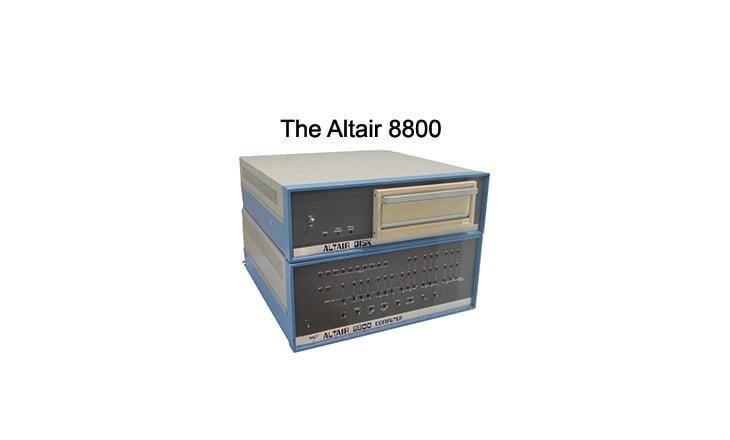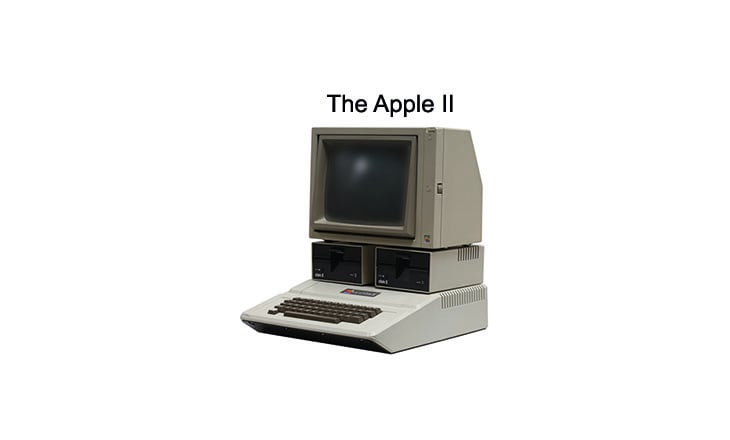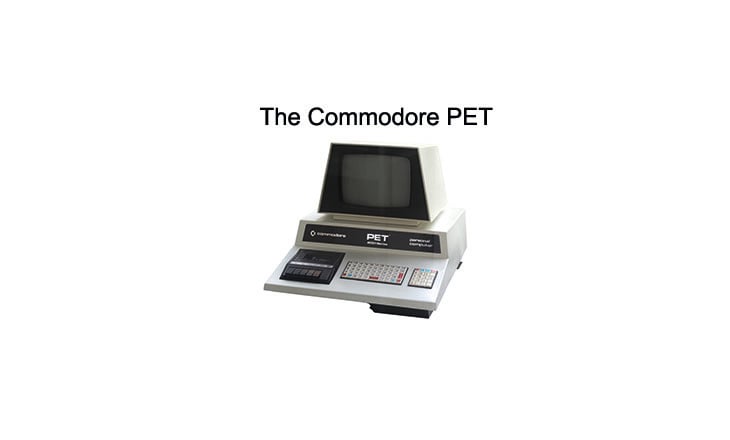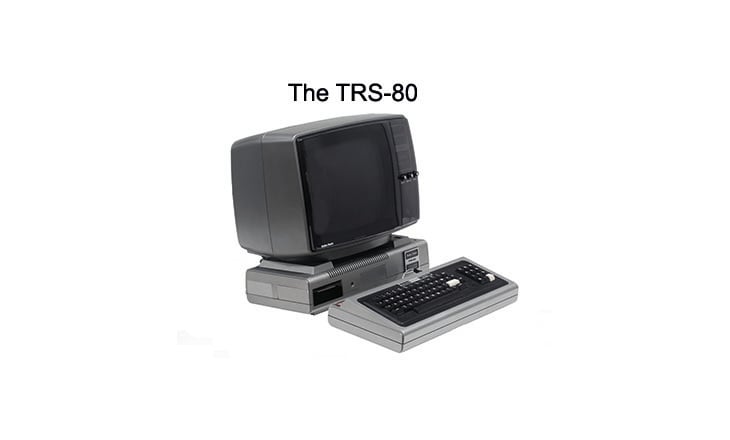Tablets and smartphones might be cool but, one class of computer has reshaped the working world more than any other: the personal computer. Martin Cooper MBCS charts the PC’s birth, life and ongoing success.
The Waldorf Astoria sits on New York’s Park Avenue, between 49th and 50th. Standing 47 stories or 191m tall, the art deco landmark was the world’s tallest hotel between 1931 and 1963. Its height, of course, isn’t its defining characteristic. Rather, the Waldorf Astoria earned its place as a byword for lavishness. Business leaders, celebrities and politicians lived, lodged and lounged there.
Our story - the history of the PC - reaches something of a mid point, in the Astoria’s Ball Room. The date was 12 August 1981 and the press gathered to watch IBM unveil its 5150 - Big Blue’s first personal computer.
For $1,566, buyers got a system unit and a keyboard. Options included a display, a printer, two diskette drives, extra memory, communications, game adapter and application packages - including a text processor.
The development team referred to their creation as a ‘mini-compact, at a mini-price, with IBM engineering under the hood.’
By today’s standards, the 5150 looks bland and seems completely unremarkable. Back in 1981, however, it was revolutionary.
It went on to change how businesses structure themselves, work and collaborate. Indeed, it was so revolutionary, IBM, it could be argued, failed to appreciate its ultimate difference.
For IBM, the 5150 represented the start of a rough journey which saw it build yet another billion-dollar business, define an industry and, along the way, make at least one business error of historic proportions.
The end of IBM’s PC story sees the hobbling US giant - once the over-sized jewel in America’s rusty industrial crown - sell its PC business to China’s Lenovo. The deal happened in 2004 and saw $1.75 billion of cash and securities change hands.
Before it actually began
Just as the Waldorf Astoria was losing its crown as the world’s tallest building to Moscow’s Hotel Ukraina, IBM made a very big move. The year was 1967 and saw Big Blue announce the System/360 family of computers.
S/360 was an answer to a problem IBM, its customers and competitors were all facing: compatibility. Generally, back in the 50s and 60s, computers - then hulking leviathans - each did a specific job and ran specific software. They were unlike today’s jack-of-all trades PCs.
IBM itself produced ranges of machines that couldn’t talk to each other. If a customer’s business grew and it needed more computing power, software may have needed rewriting. This made upgrading hard for customers and upgrades difficult to sell for IBM’s swelling army of salespeople. All this was set against the backdrop of galloping technical advancement.
The S/360 replaced all five of IBM’s computer product lines with one strictly compatible family. It used a new architecture that pioneered the eight-bit byte which is still in use in computers today.
The S/360 project was huge and is one of business history’s biggest bets. The firm, under the leadership of Thomas Watson Jnr, invested $5bn, or around $40bn in today’s money. Watson was betting the farm and IBM’s future on the S/360. Indeed, at the time, Fortune magazine dubbed it ‘IBM’s $5bn gamble.’
‘The announcement was revolutionary in concept and unprecedented in scope,’ says IBM. ‘Six processor models were announced, covering a fifty-fold range in performance, as well as 54 different peripheral devices. These included several types of magnetic storage devices, visual display units, communication equipment, card readers and punches, printers and an optical character reader.’
All this meant that, as a company grew, so could its computing infrastructure. And IBM was there to sell the components.
The colossal investment certainly worked as initial orders outstripped forecasts. And as the sales rolled in, IBM continued to dominate the mainframe computer arena. The S/360 also contributed handsomely to IBM’s profits.
But it came at a cost. Such was the scale and risk of the S/360 project, its development rocked IBM internally. Employees were scared, stressed and the scars ran deep.
IBM, it should be remembered, made all the hardware itself and wrote all the software for the S/360. And, of all the project’s problems, the software was one of the most vexatious.
Under the wing of Fred Brooks, 1,000 IBMers worked on the machine’s operating system, which, in 1963, was in disarray. Employing more programmers didn’t help.
Brooks would later expand on this idea in The Mythical Man-Month (Addison-Wesley, 1975). The text is still one of the most widely read books on computing.
In summary, if the S/360 project had crashed, so would IBM. As such, it was a never-again experience for IBM and for Watson himself. Indeed, James W. Cortada in IBM: The Rise and Fall and Reinvention of a Global Icon mulls whether the S/360 contributed to the heart attack which saw Watson, an otherwise fit man, step down as IBM’s CEO in 1971. Watson, Cortada says, was utterly haunted at the time by a visceral fear of failure.
Outside the walls
IBM reaped the S/360’s rewards, built on its legacy and largely dominated the mainframe market.
But while IBM continued to grow in scale, fortune and bureaucracy, a quiet revolution was building in California. People wanted their own computers - personal computers - and, initially, they were even prepared to build them themselves.
In 1971, a small firm called MITS did well selling calculators based on the Intel 8080 chip. The Intel 8080 is a very important chip but not quite as ground-breaking as its predecessor, Intel’s 4004. The 4004 became the first general-purpose customer programmable processor on the market - a ‘building block… that engineers could purchase and then customise with software to perform different functions in a wide variety of electronic devices.’ The 4004 was the first in a very long line of Intel CPUs - components to which we’ll return.
When the calculator business dried up due to a sharp drop in prices, MITS chanced its arm and released a DIY personal computer kit based on Intel 8080.
The Altair 8800 was designed in 1974 and captured the imaginations of a growing army of computer enthusiasts and hackers. Buyers received a kit which built into what appeared to be little more than a bread bin with some LEDs and switches on the front.
The machine was just powerful enough to be useful and just the right price to be affordable. And, as such, it was championed on the cover of Popular Electronics magazine as the ‘World’s first minicomputer kit to rival commercial models.’
Seeing the machine on the magazine cover sparked two childhood friends into approaching MITS with the idea of writing a BASIC interpreter for the computer. The pair were called Paul Allen and Bill Gates - co-founders of Microsoft; a name we’ll most certainly return to.
A hacker’s club
Elsewhere, in Menlo Park, California, a rag-tag army of computer hobbyists was growing. The epicentre of the movement was the Homebrew Computer Club - an informal group that met to share ideas, knowledge and trade computer parts. And, of course, to celebrate and discover more about computers. Not big mainframes or minicomputers - those were way out of the members’ price range - but machines you could own yourself.
The group started in 1975 and went on to play a very influential part in the growing microcomputer revolution and its evolving place in Silicon Valley.
Enter Steve Wozniak and Steve Jobs - both members of the Menlo Park group. There, Wozniak saw an MITS Altair and was impressed: so much so, that he was motivated to design and build his own computer.
Though the Altair was largely unrecognisable by modern standards, Wozniak’s design - which went on to become the Apple I - was very different. It had a typewriter-like keyboard and the ability to connect to a common-or-garden television. It was the ‘archetype of every modern computer’ writes Nik Rawlinson in MacWorld.
Wozniak wasn’t trying to change the world with what he’d produced - he just wanted to show off how much he’d managed to do with so few resources.
While Woz built each Apple I by hand, Jobs set about selling them. He was, of course, very successful, which opened the gates to Apple’s next product - the Apple II.
Launched in 1977, the Apple II was another truly ground-breaking and very popular machine. This wasn’t a kit you built yourself. Rather, it was a mass-produced, off-the-shelf, 8-bit microcomputer for the home and for business.
The trinity and becoming mainstream
1977 became a very important year for the microcomputer’s growth: from the home-brew hobbyist’s pursuit through early commercialisation and, finally, into a global phenomenon.
That year saw three key machines launched: The Apple I, The Commodore Pet and the TRS-80. These three microcomputers - personal computers - were dubbed the trinity by Byte magazine, such was their place in computing’s history.
For you
Be part of something bigger, join BCS, The Chartered Institute for IT.
The Commodore PET was launched by Commodore International, another firm that started out producing calculators. Competition from Japanese manufacturers, however, made the firm’s core business unprofitable.
Jack Tramiel, Commodore’s famously forceful and irascible leader, gave his team six months to have the PET ready for the 1977 Consumer Electronics show.
The PET had a 6502 processor, a keyboard, cassette deck and a monitor - all built into one unit. It was an angular unit, which, if you like that sort of thing, might be considered a design classic. It cost $795 at launch.
The TRS-80 Micro Computer System was launched by Tandy from Texas. It had a detachable keyboard - a proper one with real clicking keys. The machine was built around a Zilog Z80 processor and a monitor. It launched at $600.
Of the three, Tandy’s TRS-80 became the champion seller. Until 1982, it was the best-selling PC line of computers - outselling the Apple II series by a factor of five.
Much of the TRS-80’s success can be ascribed to its hardware - which was built to a price - but, also to its software. Critically, by 1979, the TRS-80 had the largest selection of software in the personal computer marketplace.
And so, the micro computer revolution was well underway. It created a wave of interest and fascination that would spur a generation of bedroom coders, hobbyists, gamers and explorers. In many ways, this period in computing’s history (the late seventies to the late 80s) is one of its most fertile and vibrant.
Today, we’re used to technology monocultures: Microsoft, Apple, Google; Intel and AMD; Windows and Linux. Back then, such was the demand for computers, that in the UK alone there were tens of different computers available - all built around different architectures, custom chips and bespoke operating systems.
Beyond home users, businesses began to switch on to these personal microcomputers and their possibilities. Where data jobs would previously be administered by the data processing department - on the company’s mainframe or minicomputers (computers that were anything but mini but smaller and cheaper than mainframes) - microcomputers offered more flexibility.
Departments could hold and manage their own databases; spreadsheets put financial records and planning into business units’ own hands and anybody could now type a letter using a word processor.
Teaching an elephant to dance
It would be unfair to say that the microcomputer revolution passed IBM by while the giant continued to focus on mainframes, typewriters and minicomputers. It would, however, be more correct to suggest that no matter how aware IBM was of a growing demand for personal computers, it wasn’t geared up to make one. Although it did try.
Enter, with a thump, the IBM 5100 Portable Computer. Drawing on its pioneering SCAMP (Special Computer, APL Machine Portable) prototype of 1973, IBM’s General Systems Division announced the IBM 5100 Portable Computer in September 1975.
The machine weighed 50 pounds or 22Kg (a modern Microsoft Surface weighs just 680.4g). Nevertheless, for the time, the 5100 was an amazing technical achievement.
All grown up
By the late 1970s and early 80s, Silicon Valley’s personal computer gold rush had matured and become a more stable industry. Businesses were buying machines and customers were telling IBM it should make a personal computer too. What IBM brought to the table was, of course, a solid reputation for respectability and dependability. Nobody, as the saying went, got fired for buying IBM.
IBM’s executives finally decided to grasp the nettle and launch the company’s own personal computer. The job of designing, building and launching the machine was given to Bill Lowe. He was given two weeks to present a plan and a year to do the job.
Lowe’s task, which at first glance appears big, was actually a lot bigger. The problem was, the maturing PC industry was growing and developing very quickly. However, IBM was a very process driven organisation, which worked - Cortada explains in his book - to a four- or five-year product development cycle. The PC industry was moving much too fast for that. So, IBM chose to do something very un-IBM: it decided to move quickly too. At the time, one analyst remarked: ‘IBM bringing out a personal computer would be like teaching an elephant to tap dance.’
But dance it did and a year after receiving the brief, the IBM 5150 was announced. Lowe set up shop in the company’s Boca Raton facility. There, he put together a team of 12 experts and strategists who worked around the clock to scope out hardware, manufacturing, software and even a sales strategy.
Quickly, Don Estridge volunteered to join the twelve strong ‘dirty dozen’ in Boca Raton. Estridge wasn’t a traditional IBMer - he wore cowboy boots and shunned the firm’s norms and traditions. ‘Estridge,’ IBM says, ‘decided early that to be successful and to meet deadlines, the group had to stick to the plan: using tested vendor technology; a standardised, one-model product; open architecture; and outside sales channels for quick consumer market saturation.’
This was, of course, most unlike IBM. With the System 360, for example, IBM built all the hardware and wrote all the software - as it traditionally did. The team broke all the rules when it started working with external vendors and manufacturers.
Gates to a different future
One of those external firms was a then little-known company called Microsoft, whom IBM contracted to produce the new PC’s operating system. To meet IBM’s deadline, Bill Gates realised he didn’t have time to write one from scratch, so he bought an OS: QDOS (quick and dirty operating system) for around $75,000 from Seattle Computer Products.
Critically, IBM didn’t buy the rights for QDOS from Microsoft - the smaller software firm retained ownership of the code. IBM just packaged the software with its PC. By the early 1990s, that $75,000 investment allowed Gates to create MS-DOS and build a company worth $27bn in the early 1990s.
Did IBM make one of the biggest errors in corporate history by neglecting to buy the rights to QDOS? Quite possibly. But, in its defence, neither IBM nor Gates thought that the PC industry would boom. In the following years, Cortada writes, Gates said he had been ‘lucky’.
The unveiling
And so, on 12 August 1981, the press gathered in The Waldorf Astoria to see the IBM 5150 Personal Computer’s unveiling. They saw a PC with an Intel 8088 CPU, running Microsoft software. More importantly, from a historical perspective, what they also witnessed was the launch of a de facto standard for PC design. Critically, again, IBM published and made open the computer’s specification - anybody could make one.
The 5150 was a huge success. In another un-IBM move, the PCs were sold through a retail outlet: ComputerLand. Historically, IBM leased its big-iron hardware to customers through its army of salespeople. With demand massively outstripping predictions, the Boca Raton-born project generated a billion dollars in revenue.
Suddenly, thanks to IBM, the Personal Computer became a serious corporate machine - a far cry from the stuff of Californian hippies’ silicon dreams. The PC was now a real class of computer. Indeed, in 1982, rather than naming a ‘Man of the Year’, Time magazine chose a ‘Machine of the Year.’ The cover of the January 3, 1983 issue features the headline, ‘Machine of the Year: The Computer Moves In’.
For IBM, the problem was that, culturally, it didn’t know what to do with the PC. The business unit that created the machine didn’t fit naturally with the rest of the firm’s units, which focused on typewriters and mainframes. It was cowboy boots versus wing-tipped shoes. At the time, stories of boardroom battles filled newspaper columns.
Eventually, Estridge’s team was subsumed back into IBM’s existing structures and processes.
Assessing the legacy
IBM designed the PC standard and, thanks to Big Blue’s name, reputation and gravitas, built the market for the machines. The standard was, of course, open, so anybody could build a PC clone - and they did.
A whole industry grew up building machines that ran MS-DOS and used Intel CPUs. IBM had built a billion-dollar business and equipped its competitors to make their own clones.
Estridge went on to be remembered as the father of the PC. His Boca Raton swansong was the IBM Personal Computer XT (eXtended Technology). The machine launched in 1983 and was a hit.
The next year saw the launch of the IBM PCjr. It was a cut down IBM PC designed to compete more in the home market - with the Apple II and the Commodore 64.
The machine was a disaster. It was too costly for the home and too lethargic for business use; its tiny chiclet keyboard was too small for adults to type on and soon became an object of ridicule. Worse still, due to IBM’s internal delays, the PCjr missed 1984’s Christmas rush.
Among the pantheon of product design cockups, the PCjr ranks down there with the Edsel and New Coke.
Finally, today
Today, of course, IBM no longer makes PCs. But the PC standard still rules. And, despite countless news stories and analyst briefings, where the PC’s death has been announced, the PC is still going strong.
‘PC growth peaked in 2010,’ says Ranjit Atwal, Senior Research Director with Gartner. ‘Then tablets and adjacently smartphones came as alternatives and the PC market fell from 372M units in 2010 to a low of 274M in 2018, losing nearly 100M units on an annual basis, mostly from the consumer market.’
Far from dead, he says: ‘The PC market grew close to 6% in 2020, including Chromebooks, which grew by nearly 90%. The demand is due to remote working... students are home [too].’ Indeed, Atwal suggests that if there were not a global chip supply shortage, even more PCs would have sold last year.
Images: Wikimedia Commons








